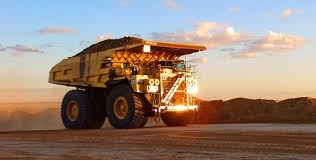An ongoing CSB probe into the February 2015 explosion has uncovered multiple process safety management deficiencies that led to the accident and a serious near-miss.
An ongoing investigation by the US Chemical Safety Board (CSB) of the February 18, 2015, explosion at the ExxonMobil refinery in Torrance, California, has uncovered multiple process safety management deficiencies that led to the accident and a serious near miss, the board said on Wednesday.
CSB_news_conferenceAt ExxonMobil, two workers were injured when an explosion occurred in the refinery’s electrostatic precipitator, or ESP, which is a piece equipment used to control air pollution. Due to a series of events that unfolded over several days, hydrocarbons accumulated inside the ESP, the board said. The result was a blast that dispersed large quantities of catalyst dust up to a mile away from the facility.
The CSB also found that large pieces of debris from the explosion were thrown into other units of the refinery directly surrounding the ESP. One of these pieces of debris hit scaffolding in the refinery’s alkylation unit, narrowly missing a tank containing tens of thousands of pounds of modified hydrofluoric acid, or HF.
The CSB determined that had the debris struck the tank, a rupture could have been possible, resulting in a potentially catastrophic release of extremely toxic modified HF into the neighboring community.
“Hydrofluoric acid can pose a severe hazard to the population and environment if a release occurs," said CSB chairperson Vanessa Allen Sutherland. "After HF acid vaporizes it condenses into small droplets that form a dense low-lying cloud that will travel along the ground for several miles and can cause severe damage to the respiratory system, skin, and bones of those who are exposed, potentially resulting in death.”
Torrance, California is a mixed-use city with industrial areas directly adjacent to residential communities. Within a three-mile radius of the ExxonMobil refinery are 333,000 residents, 71 schools, and eight hospitals. In an area as heavily populated as Torrance, a significant release of modified HF stored at ExxonMobil has the potential to cause serious injury or death to many community members, the CSB said.
“Had flying debris ruptured the tank of modified HF, this accident could have been far worse," Sutherland said. "We look forward to hearing the concerns from the community at our public meeting.”
The CSB said that its investigators have faced a lack of cooperation from ExxonMobil to comply with their requests for information about the near-miss incident involving the alkylation unit and modified HF, even after repeated voluntary requests and subpoenas. To date, the CSB has no or incomplete responses to 49% of its subpoena requests.
“Despite these challenges, the team is making strides to complete their investigation, including analysis of the near miss incident," Sutherland said.
The sequence of events that eventually led to the explosion at the refinery began on February 12, 2015, when problems with a piece of equipment called an expander caused the refinery’s fluid catalytic cracking, or FCC, unit to be put into a idled condition referred to as safe park.
With the FCC unit shut down, steam was forced into the reactor to prevent hydrocarbons from flowing back from the main distillation column. On the morning of the accident, this steam was escaping through an open flange on the expander, the CSB said, preventing operators from continuing their maintenance work. It had traveled through a leaking slide valve connected to the reactor.
An outside supervisor then reduced the amount of steam being forced into the reactor so that work could continue. However, at the time, workers were unaware that hydrocarbons were leaking into the main distillation column from interconnected equipment. As the pressure of the steam dropped, the hydrocarbons flowed back into the reactor, out through the leaking slide valve and eventually into the ESP, according to the board. There, the hydrocarbons found an ignition source – and exploded.
While the investigation into the explosion is ongoing, investigators say they have already identified multiple process safety management deficiencies that helped contribute to the accident.
In order to perform work to bring the FCC unit back online, ExxonMobil determined they needed to deviate from several existing procedures, the CSB said. This required a document called a variance, which is a written temporary deviation from normal operating procedures. The variance used was created in 2012 to address problems with the expander.
CSB investigators say they found that ExxonMobil did not conduct a management of change review before implementing this outdated variance, even though conditions within the FCC unit had changed over the previous three years. Read more






















